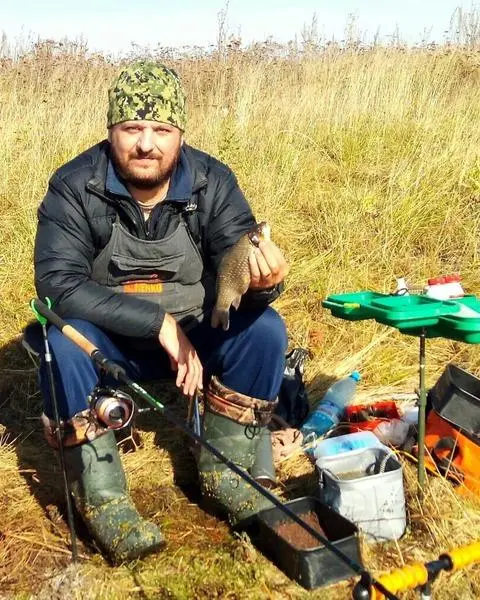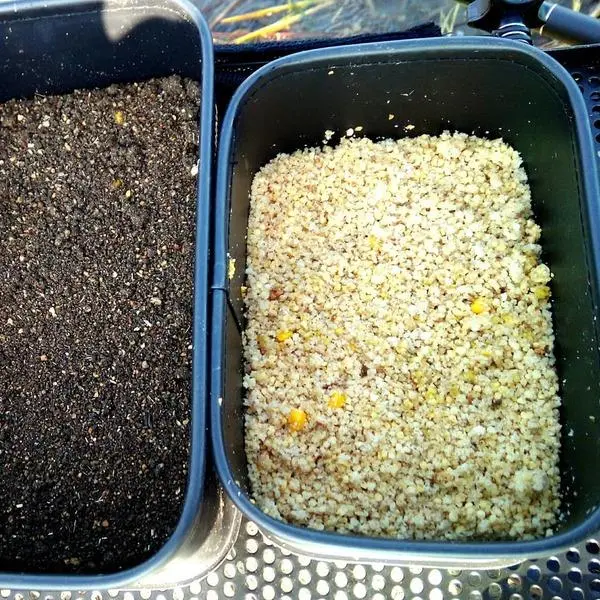The bream is a peaceful fish, under normal conditions it prefers to eat benthic insects, but will not refuse plant foods – sweet roots, bread, dough, eats peas, bread production waste. Even Sabaneev once wrote that this representative of cyprinids tends to stand near the dam-mills of cereals or flour mills, since various plant particles often get into the water there. Noticing this, the fishermen began to use boiled groats to attract fish, that is, to cook porridge. Moreover, porridge for bream can be both bait and bait. During fishing, it is used alone or with other components.
General requirements
Regardless of whether it is planned to be used as a bait during fishing, or whether it will still be used as a complementary food, there are general principles that should be followed during preparation. The main one is freshness, the bream will never eat sour porridge, which has been standing for a long time, covered with mold. In addition, such “waste”, thrown into the water in the form of bait, causes a strong flowering of water and clogging of the reservoir.
If possible, for bait or bait, it should be prepared immediately before fishing. If this is not possible, you can cook in advance and store in the refrigerator in a sealed container, but preferably no more than three days. Some types can be put in the freezer, but most will lose their properties, and when defrosted, they will turn out to be very liquid. Re-freezing is not recommended. During storage, porridge must be covered.
It is worth considering that recently cooked porridge has a much stronger smell, and one that has been standing for three days can not only lose its properties, but also become saturated with the smells of other products, which negatively affects the biting of bream.
For bait: why and why you should use them
Recently, porridges for bait are losing their positions, which they have held for more than a dozen years. The development of agricultural technology, the use of mineral fertilizers have reduced the cost of cereals many times over. This gave anglers an excellent opportunity to prepare bait for fish based on them – all kinds of cereals. In Soviet times, they were used everywhere, in some places no one even thought to go fishing without a bucket of porridge, they were made for bait, bait, combined, invented ways in which it was possible to give the desired consistency, keep it better on the hook.

Life is changing, many go fishing in a short period of free time and do not want to spend it also on cooking porridge at home. Increasingly, ready-made baits are replacing them, and modern types of fishing were originally designed for the use of dry food. For the time being, the cost of ready-made dry baits is high, but they are gradually replacing natural ones.
Until now, porridge for feeder fishing for bream, as well as porridge for catching bream on a bottom with a feeder, is popular. However, this imposes a number of restrictions on the angler:
| Porridge |
| It is necessary to cook for at least an hour on the stove, cool, transfer to a “working” dish |
| It is stored little, takes up space in the refrigerator, loses its properties |
| During fishing, if it turns out to be ineffective as a bait, the angler runs the risk of being left without a catch, because he does not have time to cook another porridge on the spot. |
| You can easily make a mistake with the consistency, then too thick or liquid is difficult to fix |
| It takes some experience to make a good porridge for bream |
However, cereals have one huge advantage – when immersed, they practically do not dust, dry baits are also not dusty, but they are specific and not suitable for all feeders. Most, when catching bream, show their positive properties:
- When immersed, the dust-free porridge practically does not attract small things standing in the water column, the nozzle, which is intended for bream, will not be torn apart by roach or bleak, it will go to him. Salapinsky recipe for porridge can be called a bright representative.
- If there is a current, the porridge is washed out of the feeder longer and creates an odor. The approached bream has a significant number of chances to meet more food on the spot and linger at the bait.
- She will stand on the feeding spot for a long time, this also has a positive effect on fishing.
- Grain particles sink less in muddy and muddy soil than dry bait.
- When feeding with porridge, there will be larger food particles at the bottom, which the bream will get used to picking up and will more likely take a hook with a nozzle. When using dry bait, you have to go to tricks for this: use pellets, additional bait with grains, or combine bait with porridge.
- Usually porridge is denser than dry bait, the feeder with it has a larger specific gravity. As a result, it reaches the bottom faster when diving, which is especially important in the current and at a good pace of fishing.
- Porridge is much cheaper than dry bait.
The last argument will be decisive for many anglers, because people of different social classes are engaged in fishing, some do not have much money to buy enough bait, but there is time to learn how to cook good porridge.
Some older people who have been fishing for a long time know how to do it quickly and do not want to switch to dry compositions. Everyone has their own “correct” way to cook this or that.
For nozzle
In this case, the angler has a specific task – to catch a fish. In many places, the bream refuses to take on something else, so spring, or rather May, when it often takes only animal baits, is a spawning ban period in most regions. For bait, the choice of fishing cereals is quite large: you can use millet and wheat composition, a cell, corn grits, but for a nozzle, the choice is quite modest. First of all, due to the fact that there is a clear requirement for porridge here – it must hold well on the hook.
The choice for the nozzle is:
- barley;
- hominy: steamed grains or corn from a can for bream;
- semolina porridge;
- pea composition with semolina – mastyrka;
- “Hercules” coarse grinding, slightly boiled.
Their advantage is that they can be used for both bait and bait at the same time. The second plus is that the bites of the annoying ruff, perch, and other fish, which often stay close to the bream, are cut off. With the help of barley or corn grains, they try to block the worm on the hook so that the little thing cannot pull it off. For mastyrka, both ordinary tackle and tackle without a nozzle – a spring can be used. It is good both in the course and in a stagnant reservoir where bream is found. However, it must be admitted that for cereals as bait, the best time is summer and early autumn, and the best bait is from a worm, maggot. Bream at this time more often grabs a worm than a bunch of barley or corn.
Pearl barley
There is a fairly simple way. For this, a thermos is used if they want to cook a small volume, or a slow cooker when they want to do a lot, so that there is enough for bait. In a thermos, cereals fall asleep about a third of the volume. Then add boiling water under the lid. Flavorings, sweeteners – dill, cinnamon, honey, sugar, salt and others can be added to the water. After that, the thermos is left overnight. Before fishing, they are poured into ready-made dishes, from where it will be convenient to take it.
In the multicooker, everything happens the same way. Choose the mode that is used to make yogurt or another that will allow you to keep the temperature around 40 degrees. Up to half fall asleep grits, and then comes boiling water. Here the problem is that you can cook a fairly large volume, because water should be poured almost under the very lid. After that, everything is left overnight, in the morning the nozzle is ready. You can pour it into a convenient dish and go to the pond. The advantage of the multicooker is that you can not occupy the gas stove, the home will not be angry with the fisherman for this.
It’s quite difficult to pull it off the hook and not get caught, it holds tight, so it’s better than others for fishing on a feeder, a donk, when a trifle constantly pulls off a nozzle. It is also used when fishing with a float, and if there is a boat, then when fishing with a ring, as both a bait and bait. Ringing is not too demanding on what composition of bait is used, but still it is desirable to mix barley in this case with a dry version.
Manka
This porridge is suitable for catching bream and for catching other fish. However, when fishing, you should avoid using it where there are a lot of bites of roach, silver bream, saps and other fish. It is not necessary to cook semolina porridge for fishing bream, it can be cooked both at home and on the pond, this is the main advantage. The second is that it can be reused and frozen. Frozen semolina, after thawing, slightly loses its smell, becomes a little thinner and keeps well on the hook. You should not re-freeze the semolina, it will be too liquid.

It is very easy to prepare it:
- the container is poured up to half the semolina;
- cold water is poured on top, if desired, flavors and flavors can be added to the water;
- after mixing, you need to let it brew for about 20 minutes, during which time the semolina will have time to swell.
It needs to be stirred from time to time. The hand will not be able to normally take such porridge and put it on the hook. To do this, either a small clean stick is used, with which a low-viscosity composition is taken from a jar and strung on a hook, or semolina is drawn into a syringe. The easiest way to do this is to remove the piston, take the tip of the syringe into which the needle is inserted into your mouth and forcefully draw air into yourself, attaching the tip where the piston was to the semolina. Semolina will fill the body, then the piston is inserted from behind, but is not pressed to the end. Syringes with semolina are especially convenient to store in the refrigerator.
The main fishing method is float fishing. The semolina holds on the hook quite tightly, but it is still an attractive target for small fish.
Bites on it are usually very true, the bream pulls it into itself with force, it is sticky, and even if he feels the point, he will not have time to spit out the hook quickly. When fishing, this is a good way to get away from zero, because if you fail to catch bream, you can use the decoy to switch to catching roach, bleak, crucian carp and any other carp fish – this is an excellent bait for it at any time of the year. Manka is a catchy enough argument for a bite.
How to cook porridge for fishing for bream became clear to everyone, the process is not complicated and even a child can do it. Properly selected proportions and freshness of products will help everyone to get trophies.









